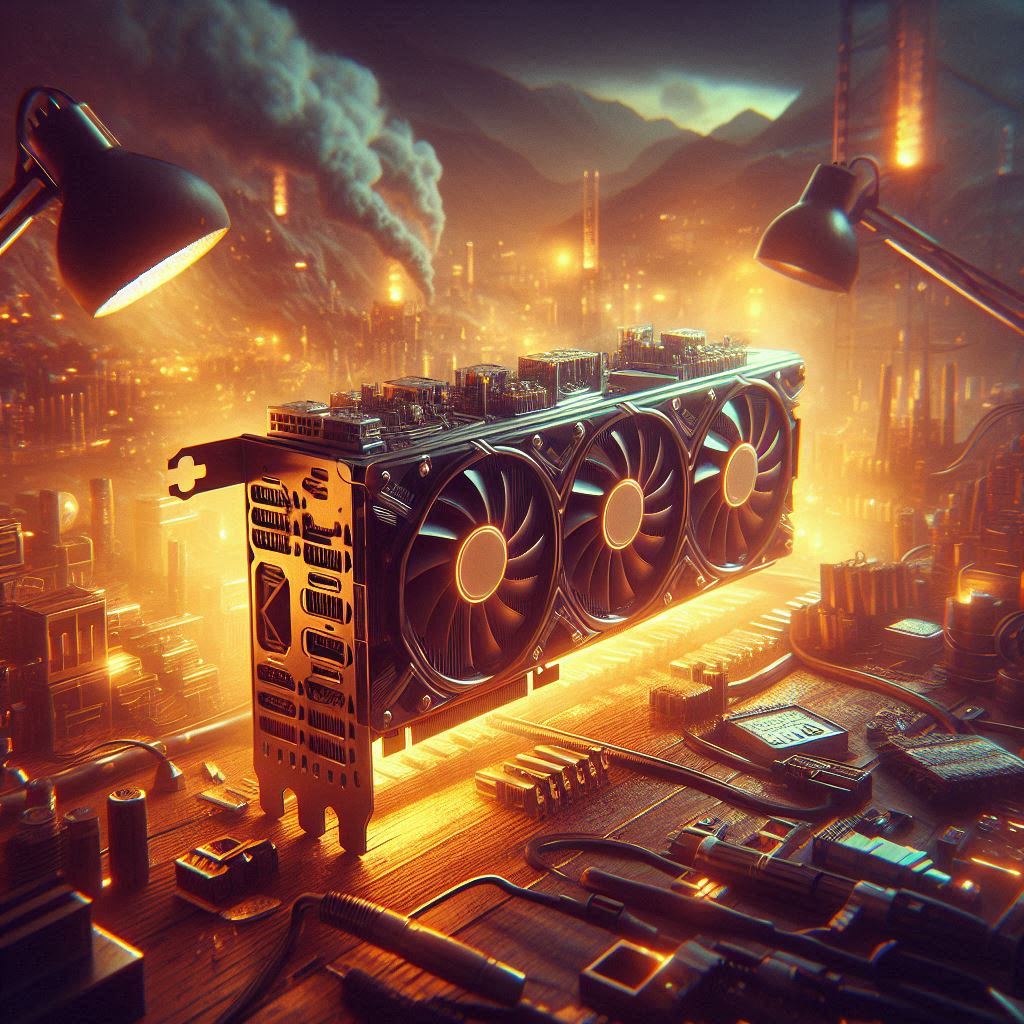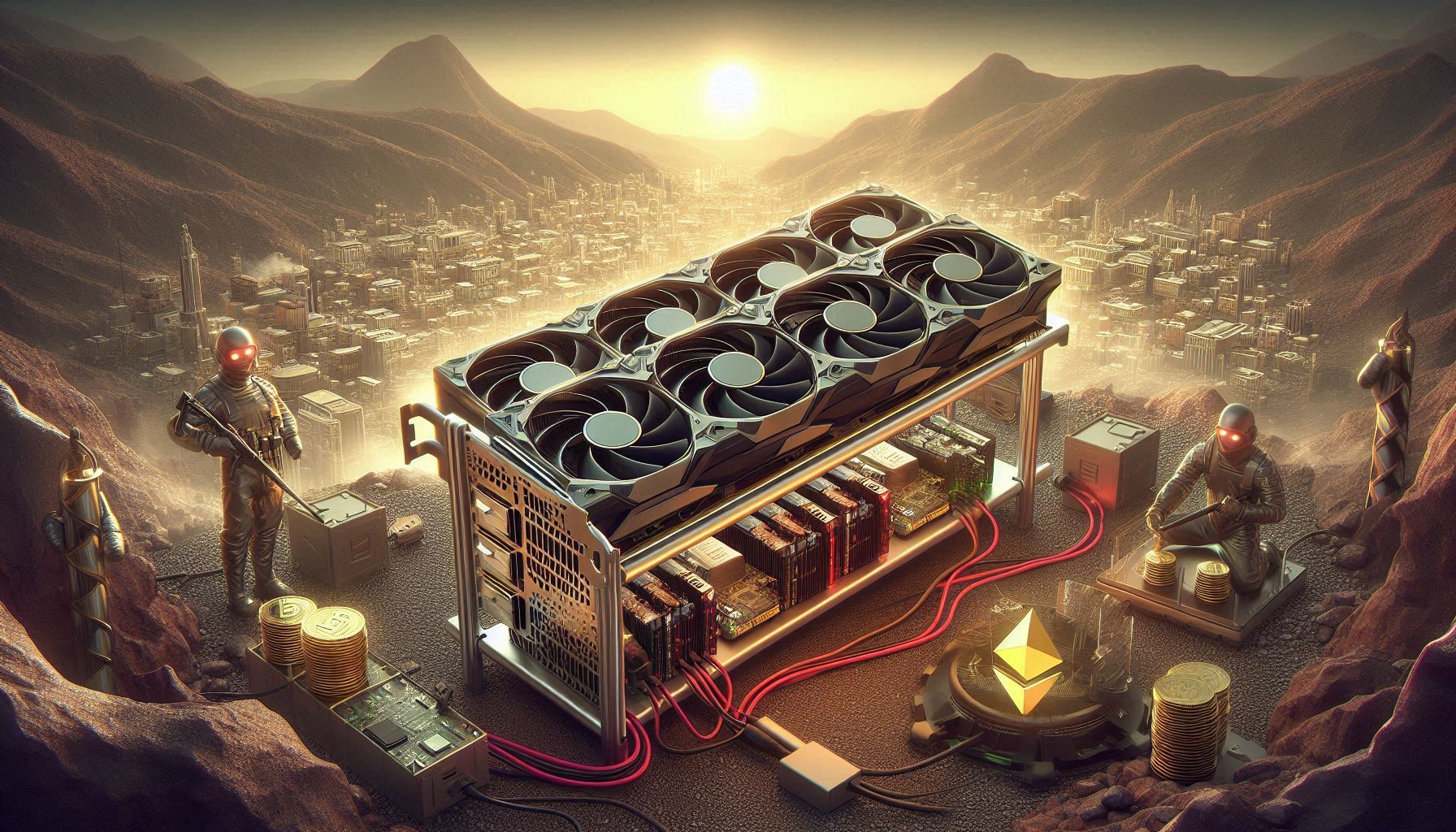What is GPU miner
A GPU miner refers to computer hardware (specifically, a graphics processing unit or GPU) and the specialized setups using these graphics cards to mine cryptocurrencies. GPU mining is the process of using a GPU—originally designed for rendering graphics in games or professional applications—to solve complex mathematical problems that validate transactions on a blockchain, earning crypto rewards for this work.
How Does GPU Mining Work?
GPU mining works by having a computer’s graphics card solve cryptographic puzzles. These calculations are part of the consensus mechanism (most commonly Proof of Work) that secures blockchains such as Ethereum Classic, Ravencoin, Flux, and others. When a problem is solved, transactions are validated and a new block is added to the blockchain. The miner (or mining pool) responsible for solving the puzzle is rewarded with cryptocurrency.

What is GPU miner - miner rig
-
Parallel Processing Power: GPUs contain hundreds or thousands of smaller processing cores, which enables them to perform many similar operations at once. This equips GPUs with a unique advantage for mining, since the mining task is highly repetitive and parallelizable.
-
Mining Rigs: A typical GPU mining rig consists of several high-end GPUs, a compatible motherboard, CPU, RAM, solid-state drive, power supply, and cooling systems. GPU rigs can be scaled from single cards to dozens in professional setups, maximizing computational power and mining profits.
Why Use a GPU Miner?
-
Efficiency and Flexibility: GPUs are far better at mining than CPUs due to their architecture, delivering many more hashes per second. They also allow for easy switching between different coins and algorithms simply by changing mining software.
-
Versatility: Unlike ASIC miners, which are locked to a single algorithm or coin, GPUs can mine various cryptocurrencies by switching software. This adaptability helps miners pivot quickly based on profitability or algorithm changes.
-
Cost-effectiveness: While ASICs are more efficient for specific coins (like Bitcoin), GPUs are cheaper for beginners and can be repurposed for gaming or sold second-hand if mining is no longer viable.
-
Scalability: Multiple GPUs can be run together in rigs, stacking computational power for greater hashing rates and competitiveness.
What Cryptocurrencies Can Be Mined with a GPU Miner?
While Bitcoin mining has become dominated by ASIC hardware, GPU mining is still widely used for altcoins and ASIC-resistant coins, such as:
-
Ravencoin (RVN): Uses the ASIC-resistant KawPow algorithm.
-
Flux (FLUX): Promotes decentralization and is mineable with GPUs.
-
Ethereum Classic (ETC): Remains a popular GPU-mined blockchain after Ethereum transitioned to Proof-of-Stake.
-
Monero (XMR): Although minable with both CPUs and GPUs, XMR continues to reward GPU miners.
-
Vertcoin (VTC), Ergo (ERG), Firo (FIRO): All remain viable for GPU mining due to their ASIC-resistant algorithms.
Profitability varies, and can be checked with online tools depending on coin price, algorithm, and electricity cost.

What is GPU miner - miner rig
Advantages and Disadvantages of GPU Mining
Advantages:
-
Greater flexibility (mine various coins)
-
Cost-effective for new miners
-
Good resale value (versatile hardware)
-
Ideal for small-scale/home mining of certain coins
Disadvantages:
-
Less profitable than ASICs on major blockchains (like Bitcoin)
-
Higher power consumption than ASICs, leading to increased costs
-
Hardware wear due to constant use
-
Growing difficulty may reduce long-term profitability
GPU mining harnesses the massive parallel processing power of modern graphics cards to validate blockchain transactions and earn crypto rewards—especially for coins with ASIC-resistant algorithms. It offers unmatched flexibility, scalability, and accessibility compared to other forms of mining, making it a mainstay among small miners and hobbyists. However, profitability is highly dependent on the mined coin, energy costs, and the ever-evolving crypto market.

